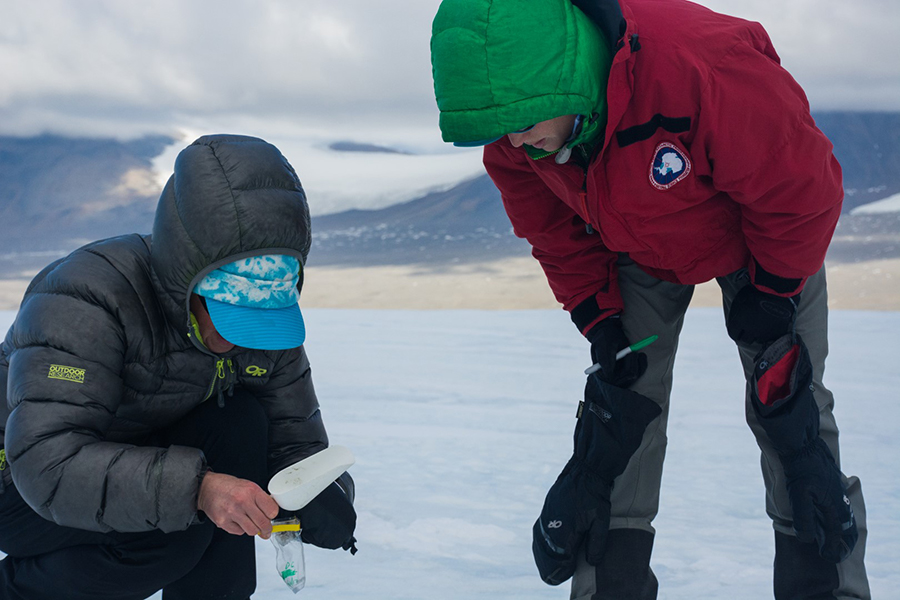Life in a Cryoconite Hole (cont.)Page 2/2 - Posted October 31, 2017
“Cryoconites are really neat because they’re closed, but also we’re going to get a pretty good handle on where the stuff inside them is coming from and what it is,” Darcy said. “So because it’s a simpler system, it’s a really good chance to develop math and theory and explanations of how these communities form.” Having a better understanding of how ecosystems establish themselves has practical applications around the world, particularly when it comes to repairing environmental damage. When coal or mining companies are required to restore despoiled land, it’s not always entirely clear whether the artificial habitats they create are true stand-ins for what had come before. “It turns out that humans don’t really know how to necessarily create mountain ecosystems or artificial wetlands in a way that really mimic the natural ones very well,” Sommers said. “Understanding how communities form, how much it matters who gets there first, that kind of question, this is the kind of simplified system that can help us actually answer that when we don’t have 20 years to let [actual] trees grow up.” 
Photo Credit: Mike Lucibella
Dorota Porazinska (front) Jack Darcy (center) and Pacifica Sommers hike up to their research site on the Canada Glacier.
Instead, their project will take just three years to complete. This first season, the team spent their time in Antarctica surveying natural cryoconite holes on three different glaciers throughout the McMurdo Dry Valleys. They used a variety of drills and pipettes to extract and sample microorganisms living in natural cryoconite holes and DNA sequencing to characterize the community structure of those microbes. “When we’re talking about community structure, we’re talking about how many different kinds of organisms that are there, and the relative abundance of them,” Sommers said. 
Photo Credit: Mike Lucibella
Jack Darcy (foreground) downloads climate data off of a monitoring station that records the weather conditions adjacent to the cryoconite holes as Andrew Fountain looks on.
They also created a number of artificial holes by depositing patches of dark soil on top of the Canada Glacier, and inserting instruments to record in real time what’s happening in the ice. “Right now we’re measuring ice temperature and sediment temperature,” Fountain said. He added that they have an embedded device to measure the electrical conductivity of the water and ice as well. “The electrical conductivity basically tells us when there is [biological] activity going on… The conductivity of the water changes with time due to photosynthesis, and the water will actually become a little more salty.” Next season, the second of their three planned seasons, they’ll create many more of their own artificial cryoconite holes and seed them with different combinations of the algal mats surrounding the glacier that regularly blow onto the ice as part of the natural cryoconite. The third year, the team will return to these and check to see how the communities have developed, and whether there are significant differences “We’ll actually make a lot of these holes, and test ideas about how communities become structured this way,” Sommers said. “Some of the specific hypotheses we’ll test are how strong are what is called ‘priority effects,’ or just who got there first… Does their structure and function really differ based on who arrived first?” NSF-funded research in this story: Steven Schmidt of the University of Colorado, Boulder, Award No. 1443578 and Andrew Fountain of Portland State University, Award No. 1443373. |



For USAP Participants |
For The Public |
For Researchers and EducatorsContact UsNational Science FoundationOffice of Polar Programs Geosciences Directorate 2415 Eisenhower Avenue, Suite W7100 Alexandria, VA 22314 Sign up for the NSF Office of Polar Programs newsletter and events. Feedback Form |


